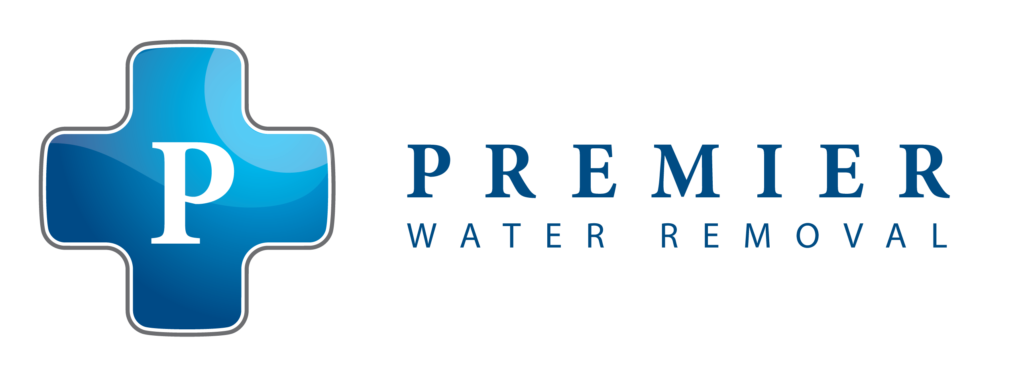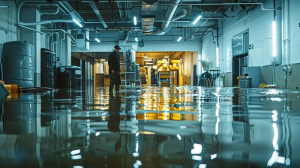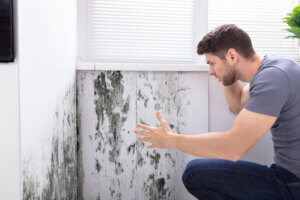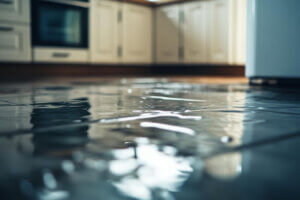Water damage can seem like a minor problem at first, but leaving it untreated can lead to significant health risks. When water seeps into your home, it can create conditions that encourage the growth of mold, bacteria, and other harmful microorganisms. These can have a serious impact on your health, affecting everything from your respiratory system to your skin.
What Happens When Water Damage Is Left Untreated?
When water damage is left untreated, it can cause a host of problems that worsen over time. Initially, the water can seep into walls, floors, and furniture, leading to immediate damage that can be costly to repair. But the impact doesn’t stop there. If we don’t address the problem quickly, the moisture can lead to long-term structural issues and health hazards.
For example, untreated water damage can weaken the foundations of our homes, creating instability and increasing the risk of further damage. Electrical systems are also vulnerable; water can cause short circuits or even fires if it comes into contact with electrical wiring. Additionally, personal belongings such as photos, books, and electronics can become irreparably damaged if not dried out promptly. This results in not only financial loss but also the loss of items with sentimental value.
Hidden Dangers: Mold and Mildew Growth
One of the most concerning hidden dangers of untreated water damage is the growth of mold and mildew. Mold spores are always present in the air but become problematic when they find a damp environment to grow in. Just 24 to 48 hours after water damage occurs, mold can begin to develop, spreading rapidly and contaminating indoor air quality.
Mold poses serious health risks. It can cause respiratory problems, allergic reactions, and aggravate conditions like asthma. In some cases, certain types of mold produce mycotoxins, which are toxic substances that can have severe health effects. Mold is particularly dangerous because it often hides in places we can’t see, such as behind walls or under floors, making it difficult to detect and eliminate. By the time we notice the problem, it may have already spread extensively, requiring professional remediation.
The presence of mold and mildew also creates unpleasant odors and can make our homes feel damp and unwelcoming. Addressing water damage promptly is crucial to prevent mold growth and maintain a safe, healthy living environment for everyone in the home.
Long-Term Structural Issues Caused by Water Damage
Water damage is not just a short-term concern; it can have long-lasting effects on the structural integrity of your home. When water infiltrates building materials, it can cause wood to warp and weaken. Over time, these compromised materials may no longer be able to support the weight they were designed to bear, leading to sagging floors and ceilings. This structural weakening can be dangerous and may require extensive repairs.
Moreover, water can corrode metal components, including nails, screws, and pipes. This corrosion can lead to leaks and further damage as metal parts lose their strength and break down. Foundations are particularly vulnerable as continuous exposure to moisture can cause the concrete to crack and crumble, posing serious risks to the stability of the entire house. Addressing water damage quickly is essential to prevent these long-term structural issues and maintain the safety of your home.
Steps to Prevent Health Risks from Untreated Water Damage
To prevent health risks from untreated water damage, immediate action is crucial. Here are some steps to safeguard your home and health:
1. Identify and Fix the Source:
– Locate where the water is coming from and stop it. Whether it’s a leak or flooding, addressing the source is the first step in preventing further damage.
2. Remove Standing Water:
– Use pumps, wet-dry vacuums, and mops to remove as much standing water as possible. The quicker the water is removed, the less damage it will cause.
3. Dry Out the Affected Area:
– Open windows, use fans, and dehumidifiers to dry out the wet areas. Proper ventilation helps reduce moisture levels and prevents mold growth.
4. Clean and Disinfect:
– Clean and disinfect all surfaces that came into contact with water. This helps kill any bacteria or mold spores that may have started to grow.
5. Monitor for Mold:
– Regularly check for signs of mold and mildew in affected areas. If you notice any mold, remove it immediately using appropriate cleaners.
Taking these steps can significantly reduce the risks associated with water damage, protecting both your property and your health.
Conclusion
Untreated water damage can lead to severe issues such as mold growth, structural damage, and health risks. It’s critical to act swiftly to identify the source of the water, remove it, and thoroughly dry and disinfect affected areas. Ignoring water damage can result in costly repairs and unsafe living conditions.
At Premier Emergency Water Removal, we understand the importance of a rapid response to water damage. Our team is equipped to handle all aspects of water damage restoration, ensuring your home is safe and dry. Contact us today for professional assistance in managing water damage and protecting your home.



